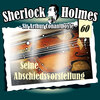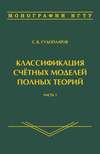Читать книгу: «France and England in North America, Part VI : Montcalm and Wolfe», страница 46
Appendix H
CHAPTER XXV. WOLFE AT QUEBEC
Force of the French and English at the Siege of Quebec
"Les retranchemens que j'avois fait tracer depuis la rivière St. Charles jusqu'au saut Montmorency furent occupés par plus de 14,000 hommes, 200 cavaliers dont je formai un corps aux ordres de M. de la Rochebeaucour, environ 1,000 sauvages Abenakis et des différentes nations du nord des pays d'en haut. M. de Boishébert arriva ensuite avec les Acadiens et sauvages qu'il avoit rassemblés. Je réglai la garnison de Québec à 2,000 hommes." Vaudreuil au Ministre, 5 Oct. 1759.
The commissary Berniers says that the whole force was about fifteen thousand men, besides Indians, which is less than the number given by Vaudreuil.
Bigot says: "Nous avions 13,000 hommes et mille à 1,200 sauvages, sans compter 2,000 hommes de garnison dans la ville." Bigot au Ministre, 25 Oct. 1759.
The Hartwell Journal du Siége says: "II fut décidé qu'on ne laisseroit dans la place que 1,200 hommes, et que tout le reste marcheroit au camp, où l'on comptoit se trouver plus de 15,000 hommes, y compris les sauvages."
Rigaud, Vaudreuil's brother, writing from Montreal to Bourlamaque on the 23d of June, says: "Je compte que l'armée campée sous Québec sera de 17,000 hommes bien effectifs, sans les sauvages." He then gives a list of Indians who have joined the army, or are on the way, amounting to thirteen hundred.
At the end of June Wolfe had about eight thousand six hundred effective soldiers. Of these the ten battalions, commonly mentioned as regiments, supplied six thousand four hundred; detached grenadiers from Louisbourg, three hundred; artillery, three hundred; rangers, four hundred; light infantry, two hundred; marines, one thousand. The complement of the battalions was in some cases seven hundred and in others one thousand (Knox, II. 25); but their actual strength varied from five hundred to eight hundred, except the Highlanders, who mustered eleven hundred, their ranks being more than full. Fraser, in his Journal of the Siege, gives a tabular view of the whole. At the end of the campaign Lévis reckons the remaining English troops at about six thousand (Lévis au Ministre, 10 Nov. 1759), which answers to the report of General Murray: "The troops will amount to six thousand" (Murray to Pitt, 12 Oct. 1759). The precise number is given in the Return of the State of His Majesty's Forces left in Garrison at Quebec, dated 12 Oct. 1759, and signed, Robert Monckton (Public Record Office, America and West Indies, XCIX.). This shows the total of rank and file to have been 6,214, which the addition of officers, sergeants, and drummers raises to about seven thousand, besides 171 artillerymen.
Appendix I
CHAPTER XXVII. THE HEIGHTS OF ABRAHAM
One of the most important unpublished documents on Wolfe's operations against Quebec is the long and elaborate Journal mémoratif de ce qui s'est passé de plus remarquable pendant qu'a duré le Siége de la Ville de Québec (Archives de la Marine). The writer, M. de Foligny, was a naval officer who during the siege commanded one of the principal batteries of the town. The official correspondence of Vaudreuil for 1759 (Archives Nationales) gives the events of the time from his point of view; and various manuscript letters of Bigot, Lévis, Montreuil, and others (Archives de la Marine, Archives de la Guerre) give additional particulars. The letters, generally private and confidential, written to Bourlamaque by Montcalm, Lévis, Vaudreuil, Malartic, Berniers, and others during the siege contain much that is curious and interesting.
Siége de Québec en 1759, d'après un Manuscrit déposé à la Bibliothêque de Hartwell en Angleterre. A very valuable diary, by a citizen of Quebec; it was brought from England in 1834 by the Hon. D. B. Viger, and a few copies were printed at Quebec in 1836. Journal tenu à l'Armée que commandoit feu M. le Marquis de Montcalm. A minute diary of an officer under Montcalm (printed by the Quebec Historical Society). Mémoire sur la Campagne de 1759, par M. de Joannès, Major de Québec (Archives de la Guerre). Lettres et Dépêches de Montcalm (Ibid.). These touch chiefly the antecedents of the siege. Mémoires sur le Canada depuis 1749 jusqu'à 1760 (Quebec Historical Society). Journal du Siége de Québec en 1759, par M. Jean Claude Panet, notaire (Ibid.). The writer of this diary was in Quebec at the time. Several other journals and letters of persons present at the siege have been printed by the Quebec Historical Society, under the title Événements de la Guerre en Canada durant les Années 1759 et 1760. Relation de ce qui s'est passé au Siége de Québec, par une Réligieuse de l'Hôpital Général de Québec (Quebec Historical Society). Jugement impartial sur les Opérations militaires de la Campagne, par Mgr. de Pontbriand, Évêque de Québec (Ibid.). Memoirs of the Siege of Quebec, from the Journal of a French Officer on board the Chezine Frigate, taken by His Majesty's Ship Rippon, by Richard Gardiner, Esq., Captain of Marines in the Rippon, London, 1761.
General Wolfe's Instructions to Young Officers, Philadelphia, 1778. This title is misleading, the book being a collection of military orders. General Orders in Wolfe's Army (Quebec Historical Society). This collection is much more full than the foregoing, so far as concerns the campaign of 1759. Letters of Wolfe (in Wright's Wolfe), Despatches of Wolfe, Saunders, Monckton, and Townshend (in contemporary magazines). A Short Authentic Account of the Expedition against Quebec, by a Volunteer upon that Expedition, Quebec, 1872. This valuable diary is ascribed to James Thompson, a volunteer under Wolfe, who died at Quebec in 1830 at the age of ninety-eight, after holding for many years the position of overseer of works in the Engineer Department. Another manuscript, for the most part identical with this, was found a few years ago among old papers in the office of the Royal Engineers at Quebec. Journal of the Expedition on the River St. Lawrence. Two entirely distinct diaries bear this name. One is printed in the New York Mercury for December, 1759; the other was found among the papers of George Alsopp, secretary to Sir Guy Carleton, who served under Wolfe (Quebec Historical Society). Johnstone, A Dialogue in Hades (Ibid.). The Scotch Jacobite, Chevalier Johnstone, as aide-de-camp to Lévis, and afterwards to Montcalm, had great opportunities of acquiring information during the campaign; and the results, though produced in the fanciful form of a dialogue between the ghosts of Wolfe and Montcalm, are of substantial historical value. The Dialogue is followed by a plain personal narrative. Fraser, Journal of the Siege of Quebec (Ibid.). Fraser was an officer in the Seventy-eighth Highlanders. Journal of the Siege of Quebec, by a Gentleman in an Eminent Station on the Spot, Dublin, 1759. Journal of the Particular Transactions during the Siege of Quebec (Notes and Queries, XX.). The writer was a soldier or non-commissioned officer serving in the light infantry.
Memoirs of the Siege of Quebec and Total Reduction of Canada, by John Johnson, Clerk and Quarter-master Sergeant to the Fifty-eighth Regiment. A manuscript of 176 pages, written when Johnson was a pensioner at Chelsea (England). The handwriting is exceedingly neat and clear; and the style, though often grandiloquent, is creditable to a writer in his station. This curious production was found among the papers of Thomas McDonough, Esq., formerly British Consul at Boston, and is in possession of his grandson, my relative, George Francis Parkman, Esq., who, by inquiries at the Chelsea Hospital, learned that Johnson was still living in 1802.
I have read and collated with extreme care all the above authorities, with others which need not be mentioned.
Among several manuscript maps and plans showing the operations of the siege may be mentioned one entitled, Plan of the Town and Basin of Quebec and Part of the Adjacent Country, shewing the principal Encampments and Works of the British Army commanded by Major Genl. Wolfe, and those of the French Army by Lieut. Genl. the Marquis of Montcalm. It is the work of three engineers of Wolfe's army, and is on a scale of eight hundred feet to an inch. A fac-simile from the original in possession of the Royal Engineers is before me.
Among the "King's Maps," British Museum (CXIX. 27), is a very large colored plan of operations at Quebec in 1759, 1760, superbly executed in minute detail.
Appendix J
CHAPTER XXVIII. FALL OF QUEBEC
Death and Burial of Montcalm.—Johnstone, who had every means of knowing the facts, says that Montcalm was carried after his wound to the house of the surgeon Arnoux. Yet it is not quite certain that he died there. According to Knox, his death took place at the General Hospital; according to the modern author of the Ursulines de Québec, at the Château St.-Louis. But the General Hospital was a mile out of the town, and in momentary danger of capture by the English; while the Château had been made untenable by the batteries of Point Levi, being immediately exposed to their fire. Neither of these places was one to which the dying general was likely to be removed, and it is probable that he was suffered to die in peace at the house of the surgeon.
It has been said that the story of the burial of Montcalm in a grave partially formed by the explosion of a bomb, rests only on the assertion in his epitaph, composed in 1761 by the Academy of Inscriptions at the instance of Bougainville. There is, however, other evidence of the fact. The naval captain Foligny, writing on the spot at the time of the burial, says in his Diary, under the date of September 14: "A huit heures du soir, dans l'église des Ursulines, fut enterré dans une fosse faite sous la chaire par le travail de la Bombe, M. le Marquis de Montcalm, décédé du matin à 4 heures après avoir reçu tous les Sacrements. Jamais Général n'avoit été plus aimé de sa troupe et plus universellement regretté. Il étoit d'un esprit supérieur, doux, gracieux, affable, familier à tout le monde, ce qui lui avoit fait gagner la confiance de toute la Colonie: requiescat in pace."
The author of Les Ursulines de Québec says: "Un des projectiles ayant fait une large ouverture dans le plancher de bas, on en profita pour creuser la fosse du général."
The Boston Post Boy and Advertiser, in its issue of Dec. 3, 1759, contains a letter from "an officer of distinction" at Quebec to Messrs. Green and Russell, proprietors of the newspaper. This letter contains the following words: "He [Montcalm] died the next day; and, with a little Improvement, one of our 13-inch Shell-Holes served him for a Grave."
The particulars of his burial are from the Acte Mortuaire du Marquis de Montcalm in the registers of the Church of Notre Dame de Québec, and from that valuable chronicle, Les Ursulines de Québec, composed by the Superior of the convent. A nun of the sisterhood, Mère Aimable Dubé de Saint-Ignace, was, when a child, a witness of the scene, and preserved a vivid memory of it to the age of eighty-one.
Appendix K
CHAPTER XXIX. SAINTE-FOY
Strength of the French and English at the Battle of Ste.-Foy
In the Public Record Office (America and West Indies, XCIX.) are preserved the tabular returns of the garrison of Quebec for 1759, 1760, sent by Murray to the War Office. They show the exact condition of each regiment, in all ranks, for every month of the autumn, winter, and spring. The return made out on the 24th of April, four days before the battle, shows that the total number of rank and file, exclusive of non-commissioned officers and drummers, was 6,808, of whom 2,612 were fit for duty in Quebec, and 654 at other places in Canada; that is, at Ste.-Foy, Old Lorette, and the other outposts. This gives a total of 3,266 rank and file fit for duty at or near Quebec; besides which there were between one hundred and two hundred artillerymen, and a company of rangers. This was Murray's whole available force at the time. Of the rest of the 6,808 who appear in the return, 2,299 were invalids at Quebec, and 669 in New York; 538 were on service in Halifax and New York, and 36 were absent on furlough. These figures nearly answer to the condensed statement of Fraser, and confirm the various English statements of the numbers that took part in the battle; namely, 3,140 (Knox), 3,000 (John Johnson), 3,111, and elsewhere, in round numbers, 3,000 (Murray). Lévis, with natural exaggeration, says 4,000. Three or four hundred were left in Quebec to guard the walls when the rest marched out.
I have been thus particular because a Canadian writer, Garneau, says: "Murray sortit de la ville le 28 au matin à la tête de toute la garnison, dont les seules troupes de la ligne comptaient encore 7,714 combattants, non compris les officiers." To prove this, he cites the pay-roll of the garrison; which, in fact, corresponds to the returns of the same date, if non-commissioned officers, drummers, and artillerymen are counted with the rank and file. But Garneau falls into a double error. He assumes, first, that there were no men on the sick list; and secondly, that there were none absent from Quebec; when in reality, as the returns show, considerably more than half were in one or the other of these categories. The pay-rolls were made out at the headquarters of each corps, and always included the entire number of men enlisted in it, whether sick or well, present or absent. On the same fallacious premises Garneau affirms that Wolfe, at the battle on the Plains of Abraham, had eight thousand soldiers, or a little less than double his actual force.
Having stated, as above, that Murray marched out of Quebec with at least 7,714 effective troops, Garneau, not very consistently, goes on to say that he advanced against Lévis with six thousand or seven thousand men; and he adds that the two armies were about equal, because Lévis had left some detachments behind to guard his boats and artillery. The number of the French, after they had all reached the field, was, in truth, about seven thousand; at the beginning of the fight it seems not to have exceeded five thousand. The Relation de la seconde Bataille de Québec says: "Notre petite armée consistoit au moment de l'action en 3,000 hommes de troupes reglées et 2,000 Canadiens ou sauvages." A large number of Canadians came up from Sillery while the affair went on; and as the whole French army, except the detachments mentioned by Garneau, had passed the night at no greater distance from the field than Ste.-Foy and Sillery, the last man must have reached it before the firing was half over.
Francis Parkman
France and England in North America
1. Pioneers of France in the New World (1865)
Revised (1885)
2. The Jesuits in North America in the seventeenth century (1867)
3. The Discovery of the West (1869)
La Salle and the Discovery of the Great West (1879)
4. The Old Régime in Canada (1874)
Revised (1894)
5. Count Frontenac and New France under Louis XIV. (1877)
6. A Half Century of Conflict (1892)
Volume 1
Volume 2
7. Montcalm and Wolfe (1884)
The year that each book was published is printed and enclosed by parenthesis after the title of each volume. In three cases, there are two listings for a line item. For those parts, Parkman issued a volume with major revisions subsequent to the initial release of the book.
The revised version of Pioneers of France (Part One) contains new descriptions of Florida and some changes to the section on Samuel Champlain. Parkman revised Discovery of the West (Part Three) after obtaining access to Margry's collection. The revised version of The Old Régime (Part Four) includes three new chapters regarding La Tour and D'Aunay.
Volume 3 was not only revised, but the title was altered. Parkman first released Volume 3 as The Discovery of the West. His updated version of Volume 3 was entitled La Salle and the Discovery of the Great West.
Other Principal Works
• The Oregon Trail (1849)
• The Conspiracy of Pontiac (1851)
Покупайте книги и получайте бонусы в Литрес, Читай-городе и Буквоеде.
Участвовать в бонусной программе




















